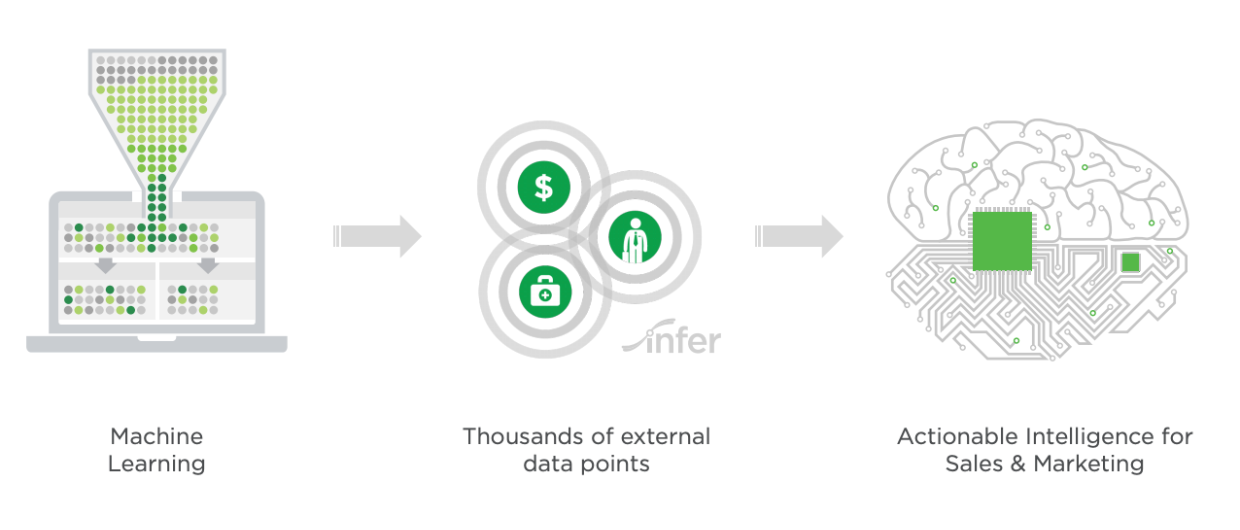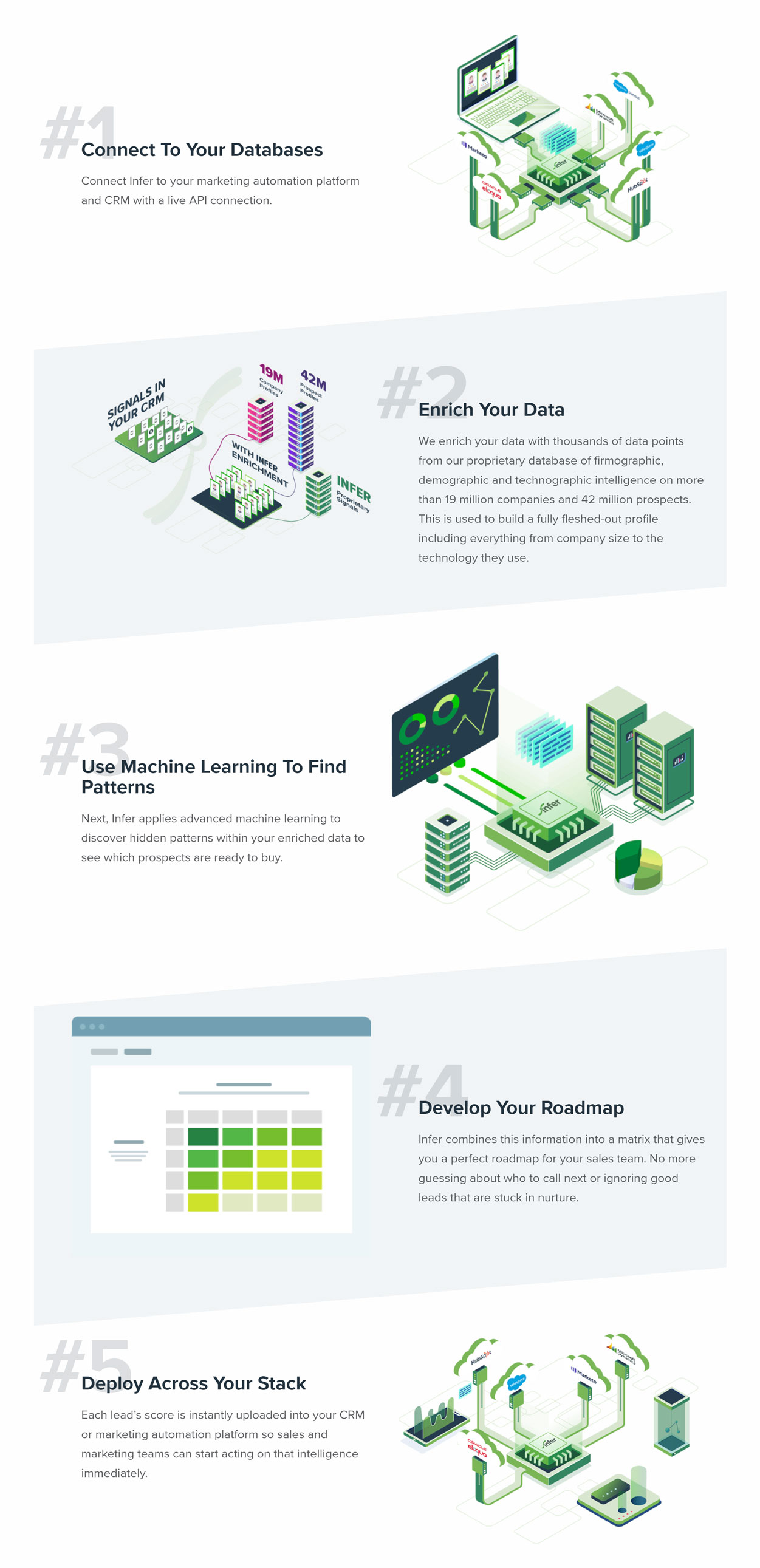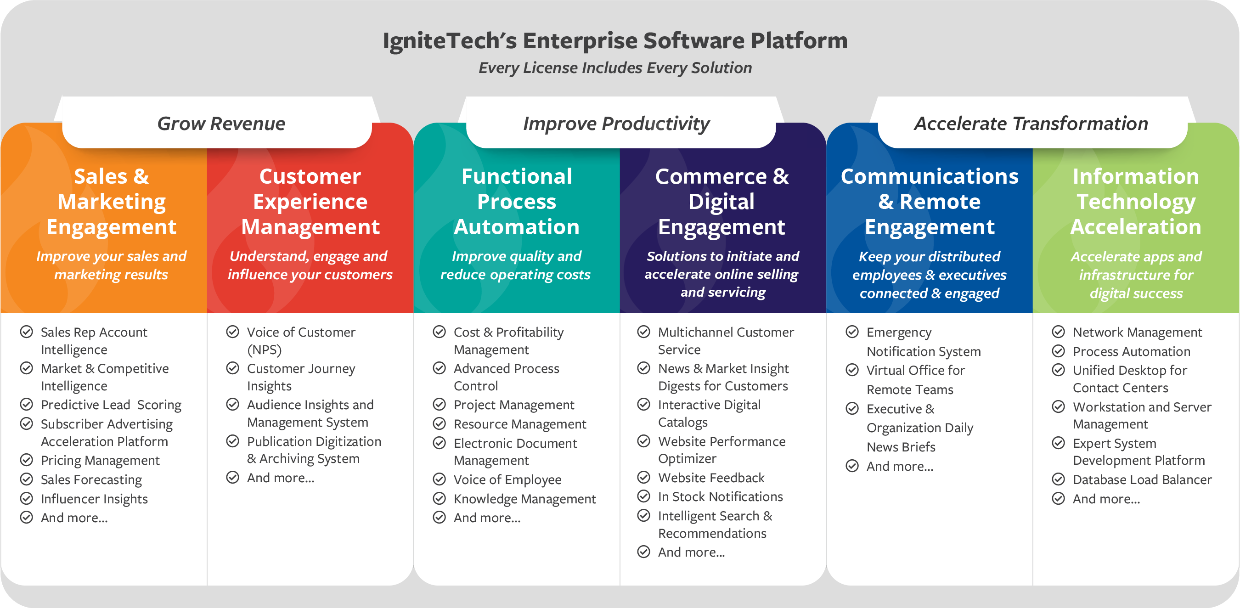Lead qualification has typically been a manual process, and still remains manual for many businesses even today. It starts with marketing teams sifting through leads and shortlisting MQLs based on actions taken on a website, such as downloading a whitepaper, signing up for a trial or even visiting a pricing page several times.
These qualified leads are passed on to the sales team who then digs deep into each lead. What requirements do they have and do our products address their need? Do they have the budget? Are they ready to make a purchase or are they just gathering information? MQLs that meet the sales teams’ criteria become Sales Qualified Leads (SQLs).
So far this has been a binary process where a lead is either an MQL or not, and at this point Sales has no way of prioritizing which MQLs to work on over others. To address this issue many organizations calculate scores to indicate just how good (or bad) a lead is. Behavioral scores assess the likelihood to buy… whereas Fit scores measure how well the prospect matches your ideal target buyer.
Assigning lead scores help organizations prioritize their sales efforts: They know which leads to reach out to immediately, which to nurture and which to drop.
Simply scoring leads doesn’t require a lot of data and much of the behavioral scoring is based on assumptions. There is no way to truly determine whether certain actions (e.g.. downloading an ebook, watching a video or visiting a pricing page) and attributes (such as company size or buyer’s job title) make a lead more likely to buy than someone from an up-and-coming company who just visited the site once.
Not surprisingly, the results aren’t reliable, as any salesperson who’s wasted countless hours and days on high-scoring-but-unproductive leads can tell you.
Bad Lead Cost Calculator
A good way to determine how well conventional lead qualification and scoring is working for you is to break down the time your Sales reps spend on bad leads.
One way to do this is to use a bad lead cost calculator:
- Take the number of sales reps you have
- Include how much each sales rep is paid each year
- Find the total cost of your sales team
- Plug in the percentage of bad leads you have on average
- Calculate how much money your business is losing from bad lead
Predictive Lead Scoring
With predictive lead scoring your Sales team won’t be squandering endless hours working bad leads. Both marketing and sales can separate good leads from the bad ones as they come in.
Being able to accurately screen leads and determine how likely they are to make a purchase is a challenge that sales and marketing teams across industries have been working hard to solve. Organizations regularly work on optimizing their lead qualification processes in the hopes to maximize sales efficiency by minimizing the time spent by reps on leads that won’t close and maximizing time spent on those that will.
Qualifying leads has always been a tricky and somewhat haphazard process. Many organizations have been doing it manually using excel to organize new leads and prospects. Other approaches include using platforms like Hubspot that take geographic, firmographic and behavioral data into consideration before assigning a score.The behavioral piece layers this model with some information on what aspect of your solution a prospect finds interesting. But it ends there. The model lacks insight into historical data residing in your CRM and cannot predict whether a lead is likely to make a purchase.
Instead you should be using AI driven tools to analyze data in your CRM in order to develop a predictive lead scoring system. The tools available today are AI driven and are built around machine learning, which means that the more data you’re able to feed the tool the more it will learn and the better it will become.
Predictive lead scoring systems such as these provide several benefits, some of which are:
- Driving insights into customers’ behaviors
- Minimizing human errors as analysis will be AI driven
- Saving time with the help of advanced machine learning algorithms
- Uncovering new patterns with the advanced AI aided data analysis
How Does Predictive Lead Scoring Work?
To take your lead scoring and qualification model to the next step, you want a model that takes into consideration previous successes and failures. Predictive lead scoring uses algorithms to go through data in your CRM as well as external data, understanding what type of leads are most likely to move through each step of your sales funnel going from an MQL and SQL to Closed won.
Using advanced machine learning and AI, predictive lead scoring tools are able to understand user behavior and trends, and determine whether leads are qualified or not and how likely qualified leads are to close.

No other lead scoring method can provide you with the same level of insight predictive lead scoring can.
The more historical data you’re able to use to fine tune the model, the better and more accurate your algorithm gets. The added insight puts your lead qualification process on steroids and allows for only the best leads that qualify as promising prospects to be passed on to your sales team. There is no guesswork and nothing manual about this process and it lays the foundations for a scalable lead qualification and scoring model.
Here’s a 5 step overview of how Infer connects to your CRM and other tools you use to comb through your data and accurately qualify leads.

Learn more about Infer by visiting ignitetech.com/infer to request your own demonstration of the platform and to see how Infer can work for you and your business.






